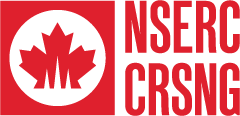Nature’s contributions to people: a multi-scale perspective
Conclusion
Things change as we change scales.
Environmental processes & properties can shift as we change scales — whether in terms of spatial or temporal resolution and extent. For this reason, our methodological decisions can produce misleading results as we expand our research to other scales. In this story map, we illustrated some of these challenges through several case studies.
Here we explore the challenges of scale in ecosystem services science and share some practical strategies to tackle them. Whether you are an undergraduate who is just starting out or a researcher diving deeper into this field, the issues and best practices showcased here can help you navigate similar challenges in your research.
Research within ResNet takes place across Canada. Here, we show the approximate location of the case studies presented here. These are a subset of research projects within ResNet.
Who we are

Learn more about NSERC ResNet here: https://www.nsercresnet.ca/

Content Authors |
(surname alphabetical order)
Miguel Arias (Landscape 5) |
Developer |
John Clark |
Project Coordinators |
Amanda Schwantes (2022-2023) |
Acknowledgements
We acknowledge the support of the Natural Sciences and Engineering Research Council of Canada (NSERC), [funding reference number NSERC NETGP 523374–18].
Cette recherche a été financée par le Conseil de recherches en sciences naturelles et en génie du Canada (CRSNG), [numéro de référence NSERC NETGP 523374–18].

We thank David Ferguson, Evan McNamara, and Ehsan Pashanejad for participating in ES Scaling HQP meetings and providing valuable feedback.
A special thanks to Elena Bennett, the leader of the ResNet network. We are deeply thankful for her exceptional leadership and for bringing together this diverse group of social-ecological scientists dedicated to fostering sustainable and resilient ecosystems across Canada.
Land Acknowledgements
In this story map we feature studies done in various regions of Canada which take place in traditional and ongoing territory of many diverse First Nations, Métis and Inuit People, such as:
- The traditional and unceded territory of the Mi’kmaq People in the Siknikt (drainage area) region of Mi’kma’ki, also known as the Upper Bay of Fundy in New Brunswick and Nova Scotia
- The territory of the Ka’a’gee Tu First Nation, a Dene FIrst Nations band, located in the Dehcho region of the Northwest Territories in the community of Kakisa
- The unsurrendered territory of the Algonquin Nations in the area known as Algonquin Provincial Park, Ontario
- The traditional territory Akwesasne and Kahnawake of the Kanien’kehá:ka in South-West Quebec
- The traditional and/or ongoing Nionwentsïo territory of the Huron-Wendat people, the Ndakina territory of the Wabanaki people, the Nitassinan territory of the Innu people and the Wolastokuk territory of the Wolastoqey people, 6. in the region known as Quebec City and its surrounding region, Quebec
- The traditional territory of Pespeselikwe te Secwépemc and Neskonlith Indian Band in the area known as the Shuswap Lake Watershed, British Columbia
- The traditional lands and territories of the Indigenous peoples who live in the province of British Columbia, particularly the unceded traditional territory of the Lheidli T’enneh First Nation, where we developed this project, home to the University of Northern British Columbia


